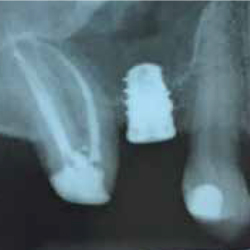Evaluation of marginal bone loss in short implants with different smooth neck length: a retrospective clinical study

Submitted: 19 September 2021
Accepted: 24 September 2021
Published: 2 December 2021
Accepted: 24 September 2021
Abstract Views: 1068
pdf: 299
Publisher's note
All claims expressed in this article are solely those of the authors and do not necessarily represent those of their affiliated organizations, or those of the publisher, the editors and the reviewers. Any product that may be evaluated in this article or claim that may be made by its manufacturer is not guaranteed or endorsed by the publisher.
All claims expressed in this article are solely those of the authors and do not necessarily represent those of their affiliated organizations, or those of the publisher, the editors and the reviewers. Any product that may be evaluated in this article or claim that may be made by its manufacturer is not guaranteed or endorsed by the publisher.


 https://doi.org/10.23805/JO.2022.14.10
https://doi.org/10.23805/JO.2022.14.10








